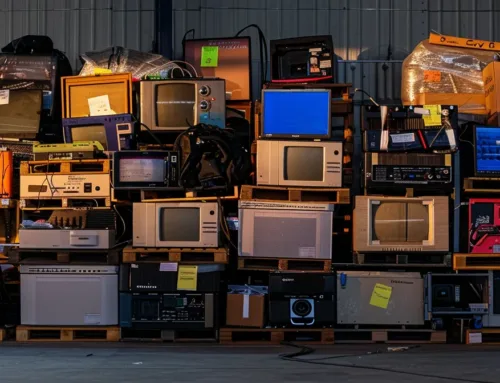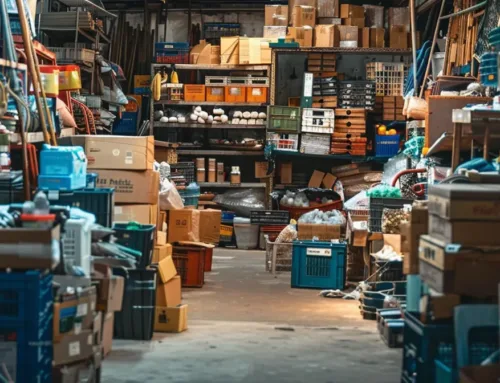
In today’s fast-paced economic environment, businesses frequently encounter moments when asset liquidation becomes not only useful—but necessary. Whether you’re winding down a division, exiting a location, reducing surplus inventory, or facing financial pressures, commercial asset liquidation offers a strategic way to recover value from unused or underperforming resources.
While liquidation may seem like a one-dimensional process, the reality is much more complex. Done correctly, it ensures that assets are disposed of efficiently, ethically, and profitably. Done poorly, it can result in lost revenue, regulatory penalties, and damaged business relationships.
This guide is designed to help business owners, CFOs, operations managers, and commercial real estate professionals understand the full scope of asset liquidation—from preparation to final reconciliation. With the expertise of End2End Logix, you’ll gain the tools to execute every phase smoothly while optimizing recovery.
What Is Commercial Asset Liquidation?
Commercial asset liquidation is the structured process of converting physical or intangible business assets into cash or other usable forms of value. This includes everything from office furniture and IT equipment to warehouse inventory, vehicles, and real estate.
Businesses may pursue liquidation for various reasons: business closure, restructuring, mergers and acquisitions, relocation, or debt settlement. Each of these scenarios requires careful planning and execution to ensure compliance, efficiency, and maximized financial return.
Common Reasons Businesses Liquidate Assets
-
Operational Downsizing: Companies scaling down operations may need to offload surplus inventory, furniture, or machinery.
-
Business Closure or Bankruptcy: If a company shuts down, liquidation can help pay creditors and distribute remaining assets.
-
Relocation or Lease Termination: Businesses moving to a new facility often liquidate fixtures or assets that are impractical to move.
-
Technology Upgrades: Older IT equipment and infrastructure may be retired and liquidated as new systems are implemented.
-
Divestitures and Mergers: Non-core divisions may be sold off or shut down, requiring the removal and resale of related assets.
Understanding the motivation behind the liquidation helps determine the urgency, scope, and method of asset disposition.
Voluntary vs. Compulsory Liquidation
There are two primary types of commercial liquidation: voluntary and compulsory.
Voluntary liquidation is typically initiated by the business owner or board of directors as a proactive measure. This type of liquidation allows for more control over the timeline and sales channels, often leading to better financial recovery and smoother regulatory compliance.
Compulsory liquidation, by contrast, is usually court-ordered and arises due to unpaid debts or legal obligations. In this scenario, the process is managed under tight legal supervision, and the business has less flexibility over how and when assets are sold.
Knowing the difference between these two liquidation paths is essential because it influences not only your strategy but also your legal responsibilities.
The Liquidation Process: From Inventory to Recovery
Asset liquidation is not a one-step transaction—it is a process that involves multiple critical phases. Each stage impacts the value recovered and the legal standing of the business.
Initial Inventory and Asset Assessment
The first step is a comprehensive inventory. Every asset must be cataloged, tagged, and documented with details such as purchase price, condition, estimated market value, and depreciation. High-value items may require independent appraisals to determine fair liquidation value.
This inventory stage is crucial. Missing or poorly documented assets can lead to inaccurate valuation, IRS issues, and reduced sales outcomes.
Valuation and Market Positioning
After cataloging, each asset is valued based on its current market price, salvage value, or estimated price in a liquidation scenario. Liquidation value is often lower than book value, especially for distressed sales or assets requiring repair.
A professional valuation service like End2End Logix can provide orderly and forced liquidation assessments based on up-to-date market trends, comparable sales data, and asset condition. This step sets the expectations and guides pricing strategies in subsequent sales.
Legal Due Diligence and Compliance
Commercial liquidation often involves legal considerations, including tax implications, lien releases, IT asset disposition (ITAD), and data security compliance for electronic devices.
Failure to comply with these requirements can expose your business to fines, lawsuits, and reputational harm. End2End Logix handles all legal documentation and risk mitigation steps, ensuring every asset is properly cleared, wiped (if digital), and ready for resale or disposal.
Strategic Sales Execution
The success of a liquidation depends significantly on how and where the assets are sold. Depending on the nature and volume of assets, several methods may be used:
-
Public auctions: Effective for reaching multiple buyers quickly and competitively.
-
Private negotiated sales: Ideal for specialized or high-value items where targeted outreach delivers better outcomes.
-
Bulk or wholesale sales: Suitable for high-volume inventory or items with limited resale value.
-
Online marketplaces and networks: Expands reach to national or global buyers with specialized interests.
End2End Logix leverages its network of vetted buyers, auction partners, and marketing platforms to match each asset with the right sales channel—maximizing exposure and returns.
Logistics, Pickup, and Facility Cleanup
Once buyers are identified, logistics becomes the next challenge. Assets must be disassembled, packed, transported, and in many cases, stored until sold. Office closures, warehouse liquidations, and retail shutdowns often require large-scale coordination involving dozens of vendors.
End2End Logix provides white-glove logistics services, coordinating all pickups, facility clean-outs, waste removal, and post-sale inspections. This removes the burden from internal teams and ensures a fast, clean transition.
Disbursement of Funds and Reconciliation
Once the sales are complete, funds are distributed according to legal creditor priorities. This hierarchy usually follows a standardized order:
-
Secured creditors with collateral rights
-
Preferential unsecured creditors, such as employees or tax agencies
-
General unsecured creditors
-
Shareholders or equity holders
Transparency during this phase is key to avoiding disputes. End2End Logix provides full reconciliation reports, showing who was paid, how much, and when. These records support financial audits and IRS filings.
Final Reporting and Tax Filing
The final phase includes reporting capital gains or losses, calculating tax obligations, and formally closing the books. Accurate reporting ensures you remain compliant with IRS and state tax authorities. Partnering with an experienced firm helps you avoid common pitfalls such as missing depreciation schedules or undervaluing disposed assets.
Sustainability and Environmental Responsibility
Liquidation does not have to mean landfill. Today’s businesses are held to higher standards regarding environmental stewardship. Electronics and IT equipment, in particular, must follow e-waste regulations and certified destruction protocols.
End2End Logix incorporates sustainability into every phase of liquidation. Assets are repurposed, donated, or recycled when resale is not viable. This approach aligns with ESG goals and may generate tax deductions or PR benefits for participating businesses.
Why Businesses Choose End2End Logix
End2End Logix is a full-service commercial asset liquidation partner specializing in maximizing asset recovery while minimizing business disruption. Their team handles everything from asset tagging and valuation to legal compliance and final reporting.
Key advantages include:
-
Customized project plans tailored to the size, timeline, and complexity of your liquidation.
-
Certified appraisers and legal advisors ensuring fair market assessments and full compliance.
-
Vetted buyer networks and sales platforms that maximize exposure and sales speed.
-
Logistical coordination and cleanup that reduce downtime and ensure a clean exit.
-
Green disposal practices that align with your company’s environmental commitments.
Whether you’re closing a single office or liquidating an entire enterprise, End2End Logix offers the experience and infrastructure to get it done right.
Best Practices for a Successful Liquidation
Plan ahead. Liquidation outcomes improve dramatically when there is time to organize assets, plan strategy, and optimize sales.
Engage professionals. Working with experienced liquidation partners reduces errors, ensures legal compliance, and improves return on investment.
Document everything. Every asset, transaction, and invoice should be documented for transparency, audit readiness, and future reference.
Know your audience. Match the sales channel to the type of asset and likely buyer. Specialized equipment may not perform well in general auctions.
Keep stakeholders informed. Lenders, investors, and employees should be updated throughout the process to ensure transparency and cooperation.
Conclusion
Commercial asset liquidation is a complex, high-stakes process—but it doesn’t have to be overwhelming. With proper planning and the right partner, businesses can recover substantial value from surplus or unused assets while staying compliant, sustainable, and on schedule.
End2End Logix offers an unmatched level of expertise and full-service project management, helping you navigate the liquidation process from start to finish. From warehouse clear-outs to national-scale asset recovery projects, their team handles everything so you can focus on your next move.
Take the Next Step
Ready to turn unused assets into working capital? Discover how End2End Logix can help your business recover value efficiently and responsibly.
Visit https://end2endlogix.com to get started today.
Share This Story, Choose Your Platform!
Get In Touch
Phone: (847) 722-6942
Email: sales@end2endlogix.com
Web: end2endlogix.com


